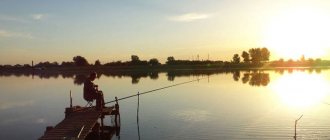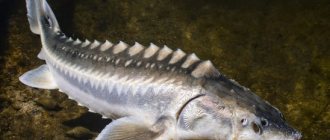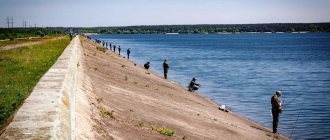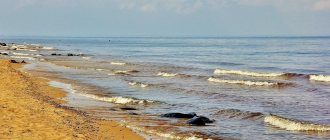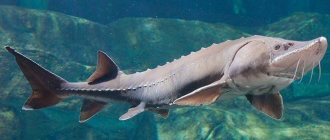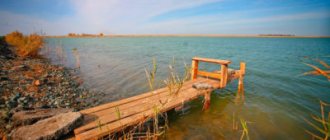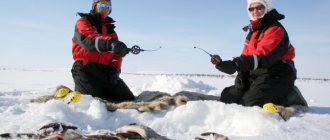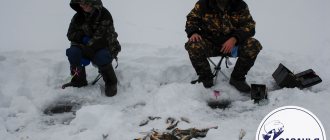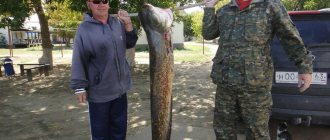The Volga, stretching across half of Russia, flows into the Caspian Sea, forming a unique natural phenomenon - peals. This is a network of eriks, branches and channels, separated from each other only by dense thickets of reeds and cattails. As you approach the sea, all this turns into a single estuary seaside - endless shallow expanses. The average water depth is 1-2 meters. Autumn in the lower reaches and Volga delta is a golden time for fishing. In early autumn, the water temperature in the river finally drops, numerous vacationers go home, and the water bloom gradually stops. The river becomes clean and fresh. And at the same time, the fish already feel the inevitable approach of cold weather. The fish faces another difficult winter. And then the bite begins.
September is the fishing season, primarily for predators.
Pike perch - the most active
Pike perch is the most active, especially compared to the summer months. Anyone who has caught it in the summer knows that there are a lot of pike perch on the lower Volga. But it is in September that pike perch is so active that you can catch it with almost any bait. Schools of pike perch, which during this period stay near numerous dumps and on the edges, attack everything that at least somehow resembles fish. Pike perch bite almost around the clock (adjusted for changes in weather conditions). But local residents strongly recommend catching the fanged predator, first of all, at night.
Confluence of three rivers
It is the place where Akhtuba, Kharabalka and Alushuka merge together that is considered the best place for fishing. Here you can catch almost a hundredweight of catfish or a seven-kilogram carp. Because of such successful fishing, the area is replete with tourist centers with corresponding advertising speeches inviting tourists, but experienced fishermen know that the most valuable catch will be only far from noisy crowds of people. The shores begin to empty already forty kilometers from the nearest populated area and the difference in the wealth and abundance of fish immediately becomes noticeable. It is to such places that you should come for real experience and a good catch, because in the absence of much competition and noisy places that scare away fish, it is much easier to do this.
Time to catch trophy pike
For those who like to hone their spinning skills, fishing in September is the best season of the year. There are a lot of pike. She leaves her summer shady shelters and goes out into the deep water. Unlike the summer months, pike “comb” almost the entire water area available to it. At this time of year, pike are caught using jig baits, rotating and oscillating spoons - in short, almost the entire limitless arsenal of a spinning angler is suitable for catching pike. The effectiveness of fishing with whitebait is not even worth mentioning. September is the month of trophy pike fishing in Astrakhan.
Description of the area
The area of the Astrakhan region covers the area on both parts of the Volga-Akhtuba floodplain and allows you to find a favorable place for both cultural fishing with all amenities, and for a real “wild” holiday on the river bank. The picturesqueness of the places is simply amazing, because it is in Astrakhan that there is a lotus plantation of five thousand hectares, and the variety of birds living here attracts many ornithologists. The weather at any time of the year contributes to excellent fishing, both in frosty winter and sultry summer; only the first month of summer is unfavorable due to the invasion of midges, which greatly disturbs the adherents of “silent hunting” located on the shore. Otherwise, the area is excellent for camping and provides an opportunity to camp out as a savage, even with certain amenities.
Asp
Every angler who has been to those places will confirm that fishing in Astrakhan in September for asp is something special. A cunning and cautious asp gets together in bands of robbers and begins to intensively kill the fish. Moving through places with fast currents, the asp especially readily eats roach and bleak. If you are going to hunt for asp, then it is better to look for it in the area of \u200b\u200bwhirlpools above the pits. However, asp boilers are a common occurrence in September. Therefore, there is no need to particularly look for the asp.
It is difficult to get close to such a boiler. Catching a predator using fry in such a pot is even more difficult. It is best to use spinning baits, if possible those designed for fishing near the surface.
At this time of year in the Astrakhan region, perch is insatiable, annoying and considered a trash fish.
Autumn changes in the composition and temperature of water also affect white fish. Of course, fishermen familiar with the inhabitants of the Lower Volga are primarily interested in carp.
Astrakhan, savage fishing: where to go? Photos and descriptions of fishing spots
A truly beloved hobby takes a lot of time and spares no effort or material costs. To get pleasure from what they love, people are ready to do a lot, but the most common activity among our men, and some women, is fishing. It brings people together and encourages them to travel many kilometers in search of fishing spots and new experiences. Astrakhan is considered the best place for fishing in Russia, rich in tributaries and eriks of the Volga, each of which is filled with different species of fish.
Carp
In September, carp actively feeds, moving throughout the entire water area, already gathering in small flocks. This river giant gradually, over the course of a month, slides into its “native” snag holes.
You can catch it during this period using float and bottom gear. It’s good if the tackle is adapted for catching large fish. Nozzles It is difficult to say anything specific about the nozzles without adjusting for the weather. Usually in early September, baits of plant origin prove their effectiveness. By the time the carp reaches the pits, it begins to peck only on animal baits: crawlers, worms. However, they also catch it at this time with boilies.
Everything for great fishing
This is what the Volga branch, the Kigach River, is famous for. There are almost no tourist centers on its shores, and nature is replete with lush greenery and a variety of fish species. The river is located in close proximity to Buzan and Akhtuba, so if you have a motor boat at your disposal you can easily fish on all of them. To fish in the Dzhanai catfish hole, it is enough to spend a little more than five minutes on the road. In spring (April-May) Kigach is rich in pike, roach, sabrefish, buffalo, ram and herring, and the first month of summer will delight you with a rich catch of catfish, carp, perch, bream and asp, naturally, if a massive invasion of midges does not become an obstacle to fishing. From the second month of summer until the very end of autumn, you can catch any fish that can be found here in Kigach, so this period is the most favorable for visiting fishermen.
Bream
No other fish bites as actively on the Volga in September as bream.
This fish gathers in large schools and begins to intensively “plow” the bottom throughout the river at depths of three meters or more.
Fishing in Astrakhan in September is inextricably linked with bream fishing. Most often it is caught with bottom gear. Feeder gear works well, because even in September bream is favorable to complementary feeding.
Bream is most often caught using animal bait: a worm, maggot, and various versions of “sandwiches” can whet the appetite of this predator. But it’s still too early to go fishing for bream with bloodworms in September.
Fishing with a float
The most favorable place for such an activity is the Ashulik River, a branch of the Akhtuba. It is quiet, shallow and great for boat fishing. In some places, of course, there are depressions up to twenty meters, but generally the bottom is already located at a depth of 3-4 meters. Predatory fish are the best here, so for those who like “quiet hunting” for pike, asp, catfish or pike perch, this place is ideal. Catfish weighing up to fifty kilograms are caught here in the fall. This is due to the fact that it is during this period that the mass migration of frogs for the winter begins, which lures large specimens into shallow water; the main thing is to maintain silence while fishing so as not to frighten away the predatory fish. By the way, this will not be difficult, because there are very few tourist centers along the river bank, and most of the coastline is conducive to wild accommodation. In addition to catfish, trophy specimens of pike perch are often caught in this river.
Crucian carp and tench.
It is impossible not to mention such numerous fish in the Astrakhan region. Moreover, large individuals of these fish are most often caught on a hook during the autumn feast.
These fish share the same space on the river in September. They stay in bays with calm water and go out to well-warmed areas of water bodies.
In early September, when it is still quite warm, crucian carp feed mainly on plant food. Tench prefers animal baits. But at the end of September, both fish bite mainly on worms, maggots, and various sandwiches.
You can catch them throughout September, both with donks and float rigs.
You can tell a lot about other fish breeds. But why tell? It’s easier to come and see with your own eyes what fishing is like in Astrakhan in September.
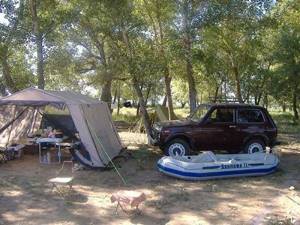
Fishing in Astrakhan in September has the same charms as in other regions at this time. At the end of the first week of September, the water in Astrakhan rivers, as elsewhere, becomes cleaner and more transparent. The fish begin to form schools and leave the areas near the shore. However, in those places where thick branches hang over the water, asp activity begins - and there are quite a lot of similar places along the Astrakhan section of the Volga. Fishing in Astrakhan in September is carried out mainly for pike, catfish, pike perch, and asp.
Tent tourism in Astrakhan
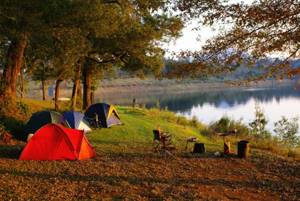
Of course, first of all, the Astrakhan region attracts fishermen with its enormous fishing opportunities. More than 70 species of fish live here, including the famous sturgeon: beluga, sturgeon, sterlet, stellate sturgeon. On the banks of the Volga, Akhtuba and other numerous rivers and channels, many tourist and fishing bases have been built, inviting guests to the Astrakhan region. Or you can simply set up a tent at any of the picturesque places. The Caspian Sea is quite warm, but not “fresh milk”. However, local residents claim that, in addition to the sea, there are plenty of beautiful and interesting places in the Astrakhan region - and they may be right.
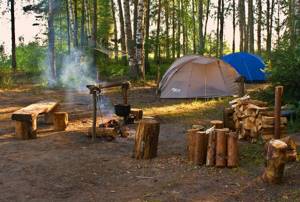
We can advise you not to bother with the sea, and just settle at a recreation center on the seaside. This is what local residents do who want to take a little break from the city heat and bustle. There are a lot of similar bases in Astrakhan. A more affordable and less comfortable way to relax in Astrakhan is to pitch a tent on the banks of the Volga or Akhtuba. In any case, relaxation on the rivers of the Astrakhan region means an excellent tan, quality fishing and relaxation. There is also a unique opportunity to admire lotuses; they bloom in July.
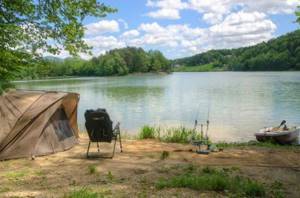
But nature is revealed in all its glory in the Volga delta, in the Astrakhan State Reserve. In addition to the unique landscapes, in the Astrakhan Nature Reserve you can see the most beautiful pink flowers of the nut-bearing lotus - one of the main attractions of the Astrakhan region. Also, one of the main attractions of the Astrakhan region is the largest salt lake in Russia, Baskunchak, and the highest relief element in the Caspian lowland - Mount Bolshoye Bogdo. These natural objects are under the protection of the Bogdinsko-Baskunchaksky Nature Reserve created in 1997.
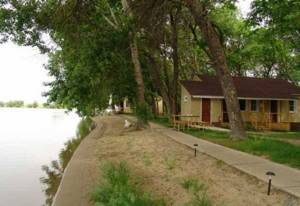
Even 40 thousand years ago, ancient people settled on the shores of the Lower Volga region and the territory of the Astrakhan region. Polovtsy, Khazars, Scythians, Sarmatians, Golden Horde - many tribes and peoples left their traces on Astrakhan land. The Selitrennoye settlement and the Samosdelka settlement are widely known - archaeological attractions of the Astrakhan region. And after Ivan the Terrible conquered the Astrakhan Khanate, a new page of the chronicle opened in Astrakhan. This city became a southern outpost of Russia in 1558 with the foundation of a wooden fortress on the left bank of the Volga, from which two decades later the outlines of the Astrakhan Kremlin began to grow.
Sights of Astrakhan
Lake Baskunchak
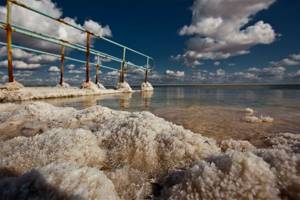
Baskunchak is a unique creation of nature, a kind of depression at the top of a huge salt mountain, whose base extends thousands of meters into the depths of the earth and is covered with a thickness of sedimentary rocks. This is the largest and saltiest of all known salt lakes in the world. The area of Lake Baskunchak is about 115 sq. km, it is located in the Astrakhan region, 53 km east of the Volga. Near Lake Baskunchak are the villages of Verkhniy Baskunchak and Nizhny Baskunchak.
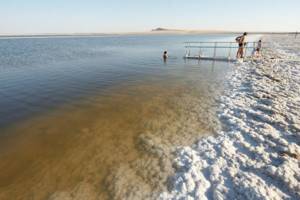
The thickness of the surface salt deposit on Lake Baskunchak reaches 10-18 m. As a result of salt mining, breaks up to 8 meters deep were formed. The depth of salt on Lake Baskunchak reaches 6 km. In spring and autumn, the level of brine in the lake is maximum - up to 1 meter. Only bacteria that tolerate salt live in brine. Today, the extremely pure salt of Lake Baskunchak accounts for up to 80% of the total salt production in Russia; from 1.5 to 5 million tons of salt are mined here per year. The Baskunchak railway was built to export salt.
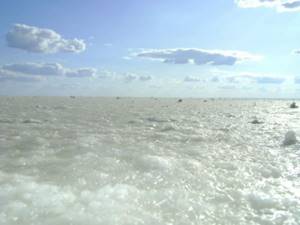
The unique reservoir is fed mainly by springs. Numerous springs flow into the salt lake Baskunchak along its northwestern shore, bringing more than 2.5 thousand tons of salts into the lake during the day.
Astrakhan Kremlin
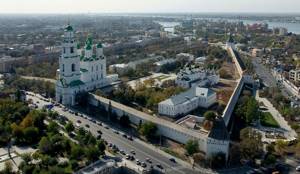
The central part of Astrakhan is an entire island washed by river waters. Well, the highest point of the island is the ancient Astrakhan Kremlin, which was built in the late 16th and early 17th centuries. The Kremlin is one of the main attractions of Astrakhan: with powerful white stone walls and towers, with the five-domed snow-white Assumption Cathedral (early 18th century), Trinity Cathedral (16-18th centuries) and other interesting buildings on the territory. The Astrakhan Kremlin originally had eight towers, of which three travel towers and four blind towers have survived to this day. The thickness of the walls of the Kremlin towers reached 3-3.5 m.

The construction of the first wooden buildings of the Astrakhan Kremlin in 1558 marked the beginning of the chronology of the new Astrakhan. Already in 1562, there was one battle tower and a passage gate on the hill, but there was still no high bell tower and stone walls. The construction of the stone Kremlin began during the reign of Ivan IV the Terrible, and was completed under his son Tsar Fyodor Ioannovich with the direct participation of Boris Godunov.
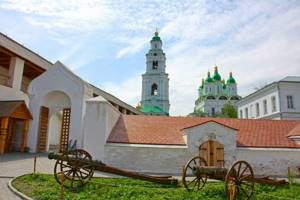
It was at the height of the Troubles, due to constant military conflicts and civil strife, that the need arose to build a stone fortress for defense. The tower began to be overgrown with buildings - the very first walls of the Kremlin were erected from bricks of the former Golden Horde capital.
Mount Big Bogdo
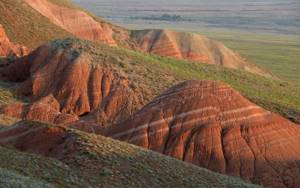
Mount Big Bogdo is the only real mountain in the Caspian lowland. The foot of Bogdo lies two dozen meters below sea level, and the top is about 150 higher. Every year Mount Big Bogdo becomes higher. The fact is that inside the mountain there is a salt dome, which increases by about 1 mm per year. The height of Greater Bogdo above sea level is 149.6 m, and even more above the surrounding area. Mount Bogdo has developed above-ground and underground forms of karst relief - beams, funnels, caves, grottoes, etc. Today, the vicinity of Mount Big Bogdo and Lake Baskunchak has more than 30 caves, the largest of which - Baskunchakskaya - reaches 1.5 km .
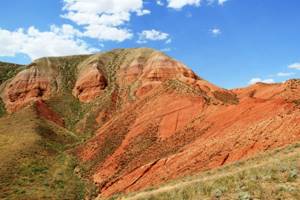
Mount Big Bogdo brought to us the remains of the Mesozoic era. In the cliffs of the mountain there is a marine Triassic with the fossilized remains of animals that lived 200-250 million years ago - this makes Big Bogdo a real geological paradise. In addition, Mount Big Bogdo is the only place in Europe where Triassic sedimentary rocks, rich in skeletal remains, come to the surface.
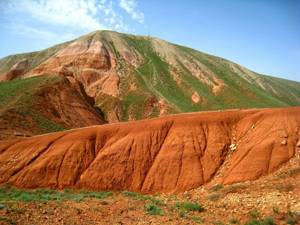
The Big Bogdo is unusual in its color - one of its sides has a red tint. This is due to the high concentration of various metals. However, despite the confirmed scientific fact, there is a legend that explains such an unusual coloring of the Big Bogdo mountain: according to legend, the mountain used to stand on the banks of the Ural River, but two Kalmyk saints decided to move it to the banks of the Volga. After long fasts and prayers, the Kalmyks lifted Mount Big Bogdo onto their shoulders and carried it across the endless sultry steppes, but one of them fell under the weight of the burden the minute he saw a beautiful local woman, and a sinful thought flashed through his head. The mountain crushed him and became irrigated with blood, which is why one side of it is still red.
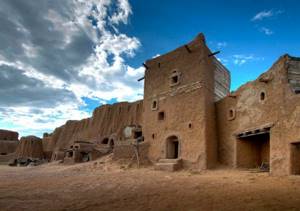
130 km from Astrakhan - a unique place. Archaeological research began here in 1965, and as a result, scientists came to an indisputable conclusion: this is the historical capital of the Golden Horde. The city was founded in the mid-13th century by Batu and was at that time a fairly large settlement. In addition, it stood on the Great Silk Road, which gave the settlement every opportunity for growth and development. In Sarai-Batu (or Sarai-al-Makhrusa) water communications and a huge number of workshops appeared, where they were engaged in bone carving, making ceramic and glassware, and metal processing.
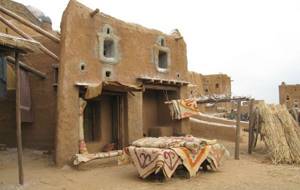
Currently, “Saray-Batu” is a kind of open-air museum. It all started in 2011 with the construction of sets for the historical film “Horde”, for which part of the city was reconstructed. After filming was completed, it was decided not to demolish the set, but to use it as a cultural center.
Baskunchak Cave
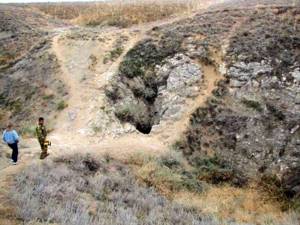
Karst caves in the vicinity of Lake Baskunchak attract the attention of speleologists, both amateurs and professionals. The most famous cave is Baskunchakskaya, about one and a half kilometers long. It has been known since the beginning of the last century.
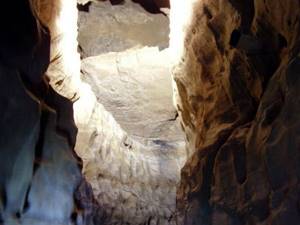
Melt and rainwater, seeping through cracks in the soft, gypsum rock, have washed out a vast network of karst caves over thousands of years. The beginning of the formation of the Baskunchak cave dates back to the end of the Late Khvalynian time, i.e. approximately 6 thousand years ago. During this time, a fairly powerful water flow existed in the cavity four times, which, against the background of vertical movements caused by salt-dome tectonics, led to the formation of several levels and was reflected in the morphology of the transverse profiles of passages in some parts of the cave. The Baskunchak cave is a horizontal two-three-tier cave, conditionally divided into three parts: the Main Gallery, the Vertical Skinner and the Labyrinth.
Sturgeon farm "Beluga"

The history of the farm begins with a dam that was opened on the Volga in the 1970s. This dam, as usual, created a spill at the sluice. And in this spill, hundreds of fish cages from the farm were placed. And in the cages there are hundreds of sturgeon. , which breeds them, existed back in Soviet times. Later, at the turn of the millennium, sturgeon fishing in Russia was strictly prohibited, and farms began to appear in the Astrakhan region to restore the population of this delicious fish. Beluga is proud that this company was one of the first to engage in controlled breeding of sturgeon and beluga. By the way, as for the latter, this farm is still the only one that generally grows it in captivity.
Astrakhan Nature Reserve
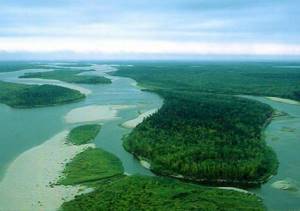
The Astrakhan State Nature Reserve is located in the Volga delta. There is water all around, islands overgrown with reeds, cattails, and willows. Having traveled more than 3000 km, the Volga branches into dozens of branches, channels, and eriks. And between them, on the islands, in three isolated areas, is the Astrakhan Nature Reserve: in the west - Damchik, in the center - Trekhizbinka, in the east - Obzhorovo. It’s worth going to the Astrakhan Nature Reserve to get acquainted with the protected nature of the region: see the unique landscapes of the Volga delta, feel the aroma of a blossoming lotus and watch the birds that live here or stop to rest.
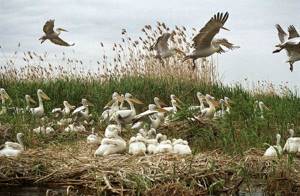
In the lower reaches of the Volga delta there are more than 290 plant species. Among them there are also relicts (salvinia, chilim). In the Astrakhan Nature Reserve there grows a fabulous flower - a lotus - of extraordinary size and color. It has been known in the Volga delta for more than 200 years, here it is called the Caspian rose. From mid-July to September, lotus plantations bloom - a sea of blue-green leaves and pink flowers that exude a delicate scent. Among the eastern peoples, the lotus is a symbol of purity and nobility. This relict plant has been known since the Cretaceous period.
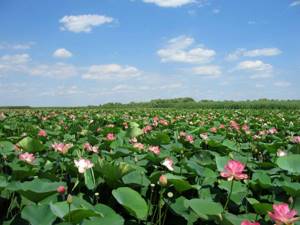
There are several hypotheses for the appearance of lotus in the Volga delta. According to one of them, the lotus was brought here by birds during migration. Lotus nuts were found in their intestines, capable of germinating when dropped into bodies of water. According to another, the lotus was brought to the delta by nomadic Kalmyks, according to whose beliefs the lotus is a sacred plant. According to the third, the lotus is an aborigine of the Volga delta, preserved here for many millions of years. The floating leaves of the nut-bearing lotus reach 80 cm in diameter and can support a small child, almost like the famous tropical Victoria Regia. Previously, it was believed that the Astrakhan lotus population was the northernmost in the world, but recently a lotus was discovered in the Volga-Akhtuba floodplain.
Watermelon Museum
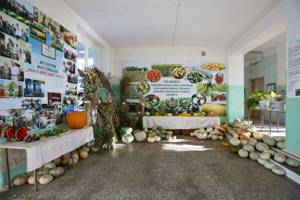
It all started with the fact that the Minister of Agriculture of the Russian Federation, Alexei Gordeev, declared the Astrakhan region to be the center of Russian watermelon. “Recognizing the historical fact, the experience of cultivation and production volumes of watermelons in the Astrakhan province, the great contribution of science in developing modern varieties of melons, I declare the Astrakhan region the center of Russian watermelon,” the minister wrote in the corresponding certificate.
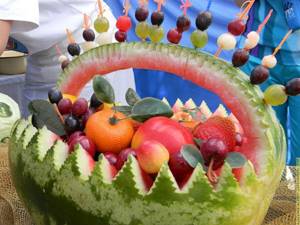
The initiative to create a watermelon museum was taken in 2003 by the Academic Council of the All-Russian Research Institute of Irrigated Vegetable and Melon Growing, which is located in Astrakhan. The decision was made after the first Russian Watermelon festival was held in the region, which pursued the goal, first of all, of popularizing melons and vegetable crops, the production of which has recently decreased everywhere. The creation of the museum was initiated by the director of the research institute, Valentin Korinets, and the former head of the Astrakhan State United Historical and Architectural Museum-Reserve, Lyudmila Karavaeva.
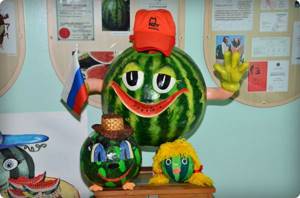
Now such a watermelon museum is the only one in Russia and Europe. Its employees can talk for hours about the source of pride and the unique calling card of the region - the legendary Astrakhan watermelon. The museum's exposition presents all varieties of famous Astrakhan watermelons. The purpose of the exhibition is to emotionally, vividly, figuratively and scientifically present the culture of watermelons. This is achieved by a complex of drawings, engravings, models and ancient frescoes representing the history of the origin of the watermelon.
Cathedral of the Life-Giving Trinity Monastery
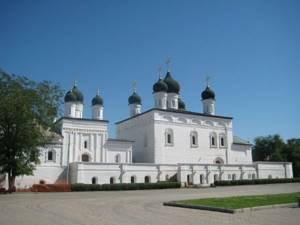
The Cathedral of the Monastery of the Life-Giving Trinity is an entire architectural complex: the Large and Small refectory chambers in the western part of the building, the northern part is represented by two churches, surrounded on three sides by single-tier galleries on the basement. A wooden monastery cathedral was built here in 1576, and in 1603 a stone church was erected with monastic money.
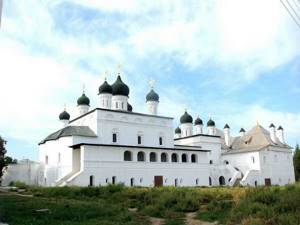
In the 18th century, the Trinity Monastery was assigned to the Trinity-Sergius Lavra, until in 1765 it came under the jurisdiction of the Order of Public Charity - during these years, part of the monastery buildings was dismantled for the construction of a gymnasium, only the Trinity Cathedral remained.
See also:
→ Karelia
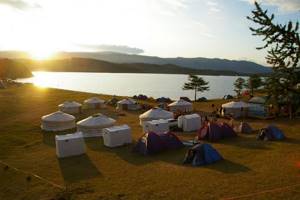
Karelia is an increasingly popular tourism destination. Vast areas of untouched landscapes and unique attractions attract fans of outdoor recreation.
→ Krasnodar region
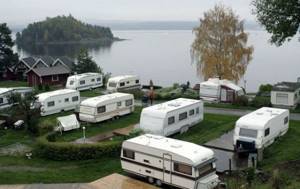
Tent tourism and car camping are very popular among vacationers in the Krasnodar region. There is everything for a comfortable stay: cafes, discos, clean beaches, infrastructure.
→ Crimea
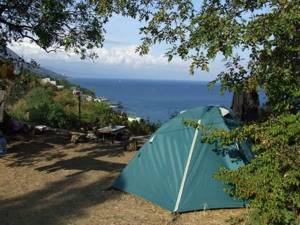
Camping in tents near the Black Sea in Crimea is an active type of summer holiday that allows you to connect with nature, go hiking in the mountains, and see something new and unknown.
→ Leningrad region
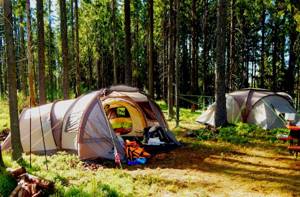
Tourists from all over Russia love holidays on the outskirts of St. Petersburg for the opportunity to enjoy beautiful scenery and swim in local reservoirs.
→ Moscow region
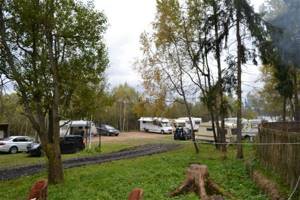
Camping in the Moscow region is becoming more and more popular, which means that you can even get a dose of energy and health for the weekend.
→ Samara region
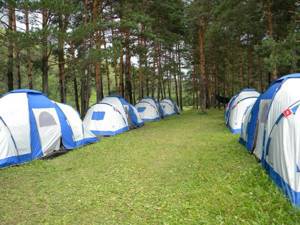
Tourists travel to the Samara region to climb the Zhiguli Mountains and get acquainted with their secrets, relax on sandy islands or among protected forests.
→ Types of tents
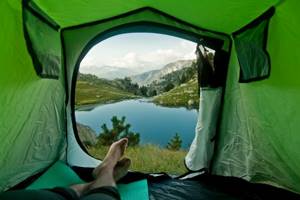
A tent when traveling is a home that you always have with you; how comfortable it is to relax in it depends on the quality and reliability of the tent. Several types of tents can be distinguished.
Who bites and how to catch
- By the third week of September, small pikes weighing less than three kilograms begin to eat. At this time, they are caught in shallow waters using surface baits. Neither rain nor the hot sun stops small pike at this time; it forgets about caution - and gets hooked. And by the way, don't forget that fishing with surface lures is a real spectacle, and this time of year is the best time to film it.
- In preparation for wintering, large pikes descend to depths. At the end of September, you can outwit them with the help of jig baits, lying in wait in holes.
- Also in the pits during this period, catfish and pike perch bite well, you can successfully use classic “rubber” and various mandules (polyurethane foam fish), as well as standard gear for catfish – a donka with a frog or a bunch of worms, a quok.
- Asp bite very actively in September. To find “cool” places, look where the tree crowns hang over the water, and also look in rapids under a high bank that have a rip current. Often the asp stands in “spots” - this is observed mainly at routs. You can catch asp using silver spinners or silver spoons, but the usual castmaster asp bait in the Volga delta performs well.
Main river
Of course, it is the Volga, and the second most popular is Akhtuba, because they form the Voglo-Akhtuba floodplain. On the banks of these rivers there are enough places for camping away from civilization. This can be done in splendid solitude or in the company of an already established tent camp. The high-water Volga River is rich in an abundance of fish, so there will be successful fishing here at any time of the year. The most fishing place is considered to be the part that flows near the village of Rechnoy, but with sufficient skill you can have excellent fishing in other places.
Fishing in Astrakhan “wild”
By September, there are no fewer “savage” fishermen in Astrakhan than in the summer. What advice can you give them? Firstly, remember that there are permitted methods of fishing, and there are prohibited ones. The permitted ones include: float rod, spoons, lures, fishing on the track, boats, quok, bottom fishing rod with a shock absorber, bottom fishing rod, crayfish (no more than three per person). Also, do not forget that there are certain standards for catching and the size of fish caught. So, if you go fishing in Astrakhan as a wild man, then you can catch: asp and pike up to 32 cm long, pike perch and carp - up to 40, bream - up to 24, freshwater catfish - up to 60, roach, roach, rudd - up to 17 , sabrefish and tench – up to 22, crayfish – up to 10 cm.
In order not to get into trouble and not run into fish inspection when planning fishing in Astrakhan in September, it is better to trust some fishing base where you will be properly instructed. Which base should you choose?
I have collected a few fishing bases in the Astrakhan region here. Choose, read and write your reviews!

